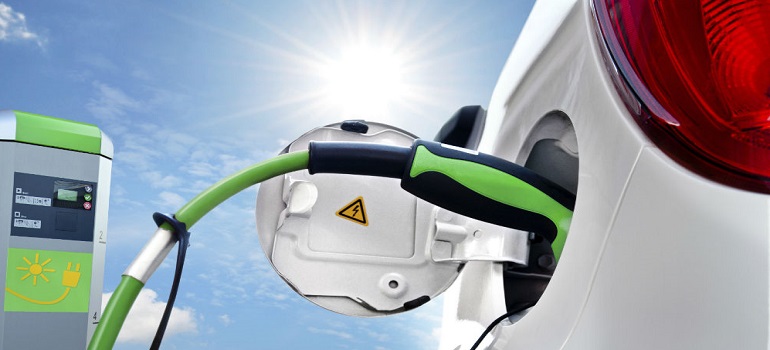 Frost & Sullivan in its latest report says that the electric vehicle (EV) market is experiencing rapid growth as a result of several global trends. Increasing city regulations, a decline in lithium-ion battery prices, and high demand in China are expected to push global EV sales to an unprecedented 1.6 million unit sales, with China leading the market at 49.5% market share, followed by Europe with 25.6% says the report.
Frost & Sullivan in its latest report says that the electric vehicle (EV) market is experiencing rapid growth as a result of several global trends. Increasing city regulations, a decline in lithium-ion battery prices, and high demand in China are expected to push global EV sales to an unprecedented 1.6 million unit sales, with China leading the market at 49.5% market share, followed by Europe with 25.6% says the report.
Frost & Sullivan expects solid-state batteries to be a game-changer, potentially opening up significant growth opportunities for future battery chemistries due to manufacturers’ claims of an energy density 2.5 times higher than lithium-ion batteries.
The report “Global Electric Vehicle Market Outlook 2018” analysis identifies growth factors, market opportunities, challenges and barriers to success across key sectors, including EV battery, EV motor, retail sales, launches, incentives and subsidies, fuel cells, charging stations infrastructure, and logistics and eCommerce. 2018 predictions, regional analysis, and critical success factors are also provided.
“With over ten automakers announcing plans for future EV launches and over 165 models currently available, EV sales growth potential could reach 25 million units by 2025 and account for 22.4% of total passenger vehicle sales,” said Prajyot Sathe, Industry Manager Mobility, Frost & Sullivan. “By 2020, EVs will no longer require government support to regulate pricing, and they will cost the same as conventional cars.”
The research firm in a statement said that the companies such as Mercedes, Tesla, BMW, VW, and Ford have innovated through a series of proprietary solutions targeting EV range, powertrain, platform architecture, and customer-centric product portfolios.
To boost growth opportunities, OEMs should focus on the following:
- Launch long-range battery electric vehicles with over 200 miles in a single charge with DC charging systems;
- Acquire smaller companies that have established themselves in a specific market;
- Target $100/kWh price and invest in future battery chemistries such as solid-state and lithium/zinc air;
- Develop go-to-market strategies and product positioning through the SUV B-C-D segment, which has attractive and dedicated platforms;
- Transform dealerships to become customer-focused with brand ambassadors to improve customer experience; and
- Invest in smart and connected ecosystems such as car-as-a-service, battery leasing, residential batteries, and mobility services with regional customisation.
“Lack of standardisation is the biggest challenge for the electric vehicle charging infrastructure market along with high costs and low resale value,” noted Sathe. “Currently, charging stations are prevalent in areas or regions where EV sales are the highest. Energy and petrochemical companies have started investing heavily in establishing electric vehicle charging stations as they are likely to be the biggest beneficiaries of the electric vehicle market.”
ALSO READ:
Wireless Charging System Developed On Kia Soul EVs
Mahindra Electric joins hands with Zoomcar to offer 100 EVs in Delhi


